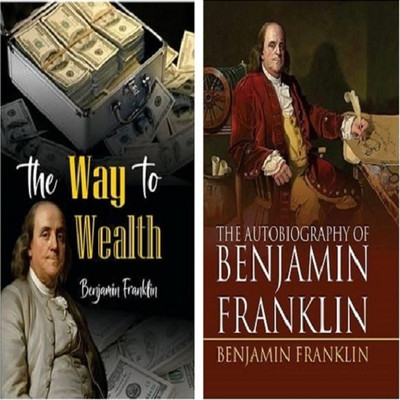The Way To Wealth & The Autobiography Of Benjamin Franklin (Combo Set Of 2 Bestseller Books)(Hardcover, Benjamin Franklin)
Quick Overview
Product Price Comparison
The Way to Wealth, written in 1757 by Benjamin Franklin. It is a summary of Benjamin Franklin's advice from Poor Richard's Almanac published from 1733-1758. It's a compilation of proverbs woven into a systematic ethical code advocating industry and frugality as a ŌĆ£way to wealthŌĆØ, thereby securing personal virtue. His advice is just as relevant today as it was 270 years ago when first written.FranklinŌĆÖs Autobiography has received widespread praise, both for its historical value as a record of an important early American and for its literary style. It is often considered the first American book to be taken seriously by Europeans as literature. William Dean Howells in 1905 asserted that ŌĆ£FranklinŌĆÖs is one of the greatest autobiographies in literature, and towers over other autobiographies as Franklin towered over other men.ŌĆØ By the 1860s, use of the Autobiography and its depiction of FranklinŌĆÖs industry and relentless self-improvement had become widespread as an instructive model for youth. So much so that Mark Twain wrote an essay humorously castigating Franklin for having ŌĆ£brought affliction to millions of boys since, whose fathers had read FranklinŌĆÖs pernicious biographyŌĆØ. D. H. Lawrence wrote a notable invective against the ŌĆ£middle-sized, sturdy, snuff-coloured Doctor FranklinŌĆØ in 1923, finding considerable fault with FranklinŌĆÖs attempt at crafting precepts of virtue and at perfecting himself. FranklinŌĆÖs account of his life is divided into four parts, reflecting the different periods at which he wrote them. There are actual breaks in the narrative between the first three parts, but Part ThreeŌĆÖs narrative continues into Part Four without an authorial break.


